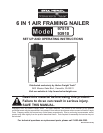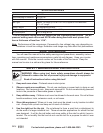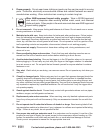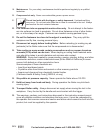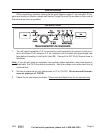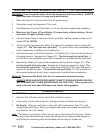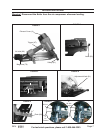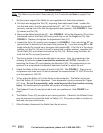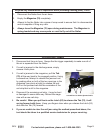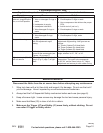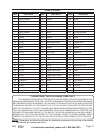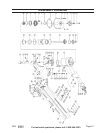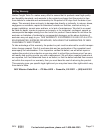
Page 8
SKU 97510
93910
For technical questions, please call 1-800-444-3353.
OPERATION
Note: The Nailer may not work if there are only 2 or 3 nails left-see Note on page 6, bot-
tom.
1. Set the proper angle of the Nailer for your application (a three step process):
a. Pull back and engage the Tab (70), exposing three adjustment holes. Loosen the
hex bolt and slide it into the appropriate hole (21°, 28°, 34°). Retighten the hex bolt
securely, making sure it ts into the appropriate hole properly. See FIGURE 3. Gen-
tly release the Tab (70).
b. Remove the Adjustment Knob (81). See FIGURE 4. Move the Magazine (76) so that
the desired hole on the Plate (80) lines up with the nut on the Magazine (76). See
FIGURE 5. Replace and tighten the Adjustment Knob (81).
c. Inspect the Pin’s (34) location and compare it to FIGURE 6. If you are driving 21° an-
gle nails the Pin should be in the lower hole (position A). If you are driving 28° or 34°
angle nails the Pin should be in the upper hole (position B). If the Pin is in the wrong
position, pull the Pin (34) out (it is held in place with a rubber washer), reposition the
Guide Plate (35), and reinsert and secure the Pin (34). Before using the nailer, be
sure that the Pin is properly secured.
2. The driving depth of a nail can be adjusted in two ways. First, by increasing or de-
creasing air pressure (never to exceed the maximum of 125 PSI). Secondly, by
loosening the Screw (37) and adjusting the Bracket A (38). We recommend you ex-
periment in a scrap piece of material to determine how far to adjust the unit.
3. Attach the Nailer to the air supply at the Air Inlet (90). See FIGURE 1. Start your air
compressor and make sure it is set to between the recommended 70-125 PSI and not
over the maximum 125 PSI.
4. To re, place the Safety (41) of the Nailer on the workpiece. The Nailer should not
re if the Safety (41) is not depressed. Once depressed, quickly squeeze the Trigger
(47) once. Do not re repeatedly; nails could bounce off of one another causing
injury. We recommend you practice with a piece of scrap material.
5. The Exhaust Cover (4) may be turned to suit your preference. See FIGURE 1 on
page 7.
6. The Rubber Cover (42) provides a non-marring surface. If desired, the Rubber Cover
may be removed to expose the teeth on Safety (41). Doing so provides a nonslip sur-
face and can improve accuracy.
7. When nished, disconnect the Nailer from the air source.



